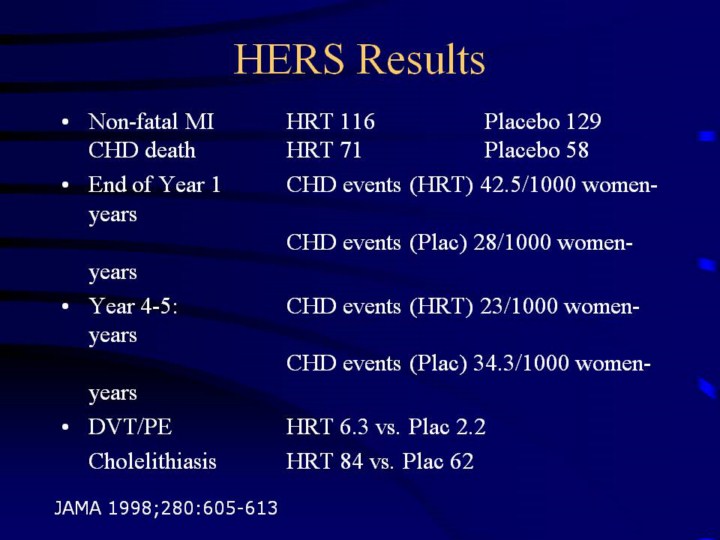| front |1 |2 |3 |4 |5 |6 |7 |8 |9 |10 |11 |12 |13 |14 |15 |16 |17 |18 |19 |20 |21 |22 |23 |24 |25 |26 |27 |28 |29 |30 |31 |32 |33 |34 |35 |36 |37 |38 |39 |40 |41 |42 |43 |44 |45 |46 |47 |48 |49 |50 |51 |52 |53 |54 |55|56 |57 |58 |59 |review |
 |
HERS results Although hormone-replacement therapy decreased LDL-C by 11% and increased HDL-C by 10% compared with placebo, at a mean follow-up of 4 years neither the primary endpoint nor any of the secondary endpoints were significantly different between treatment groups. Relative hazard of nonfatal myocardial infarction was slightly decreased and relative hazard of CHD death was slightly increased with hormone treatment, but the differences were not statistically significant. However, there was a statistically significant trend for more CHD events with hormone treatment in year 1 and fewer events in years 4 and 5. Hormone treatment also increased risk for venous thromboembolic events (deep vein thrombosis [DVT] or pulmonary embolism [PE]) and gall bladder disease.
Reference:
|